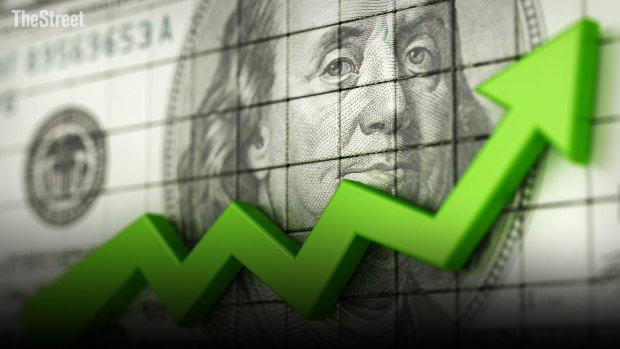
U.S. inflation slowed to a fresh two-year low last month, testing the Federal Reserve's resolve to continue with near-term rate hikes and sending stocks firmly higher in early trading.
The Commerce Department reported on Wednesday that the headline consumer price index for June was estimated to have risen 3% from a year earlier, the slowest since March 2021. That's down from the 4% pace recorded in April and just inside the Wall Street consensus forecast of 3.1%.
The annualized increase, however, marks the 12th consecutive month of decline for headline inflation, which peaked at 9.1% in June of last year. That's the longest streak since 1921.
On a monthly basis, inflation was up 0.2%, the BLS said, compared with a 0.1% reading in May and the Wall Street forecast of a 0.3% acceleration. Monthly inflation peaked at 1.3% in June of last year.
So-called core inflation, which strips out volatile components such as food and energy prices, rose 0.2% on the month and 4.8% on the year, the report noted. The key monthly reading also beat Wall Street forecasts of 0.3% and 5% respectively.
"The cooler print across the board underscores that inflation is edging lower, but the core remains "sticky," although also cooling but not fast enough for the Fed to declare victory," said Quincy Krosby," chief global strategist for LPL Financial. "The July 26 meeting will still see a rate hike but unless core inflation comes down at faster pace, July 26 won't be a one and done."
"But there's no denying that the Fed is ever closer to its terminal rate and markets are sensing it," she added.
U.S. stocks were higher following the data release with the S&P 500 rising 39 points by early afternoon trading and the Dow Jones Industrial Average gaining 151 points. The tech-focused Nasdaq was up 173 points.
Benchmark 10-year Treasury note yields were marked 8 basis points lower at 3.863% in volatile trading while 2-year notes were pegged at 4.75%, around 12 basis points lower from prior to the data release.
The U.S. dollar index, which tracks the greenback against a basket of its global peers, was marked 1.13% lower to a fresh two-month low of 100.590, on pace for its biggest weekly decline since mid-January.
Used-Car Prices Key Factor in June Inflation Drop
CME Group's FedWatch is now pricing in a 95% chance that the Fed will lift the benchmark federal-funds rate by a quarter-point to between 5.25% and 5.5% when it meets later this month in Washington.
Bets on a September hike fell to 13.3% while the odds of a move in November slipped to around 30%.
A big decline in used-car prices, one of the thorns in the side of policymakers for several months, likely elicited the better-than-expected June core inflation print.
Data from Manheim Market Insights showed that wholesale used-vehicle prices fell by a record 4.2% in June from May and were down 10.3% from June 2022.
"While this report will likely be encouraging for the Fed in achieving its price stability goal, this data point alone is unlikely to knock it off its path of another rate hike in July," said Jason Pride, chief of investment strategy at Glenmede. "With that said, the Fed will remain data dependent, and there are many other data points yet to be seen until then."
New York Fed President John Williams told London's Financial Times on Tuesday that the U.S. economy would need to see "pretty slow growth," with a peak unemployment rate of 4.5%, to get inflation back to the Fed's 2% target.
The Bureau of Labor Statistics pegged headline unemployment at just 3.6% last month, after tallying 209,000 net new jobs. That new-job figure lifted the year-to-date total to just under 1.7 million, down around 36.3% from the same six-month period a year earlier.
"We are not getting the full effects of the restrictive policy that we put in place yet," he told the paper. "Those are still ahead of us, although we have gotten some of the effects already in certain interest-rate sensitive sectors."
That so-called lag effect, which suggests a delayed response to central-bank rate hikes, is part of the reason officials are calling for at least two more increases between now and the end of the year, even as headline inflation looks set to fall further over the summer months.
"We're likely to need a couple more rate hikes over the course of this year to really bring inflation back into a path that's along a sustainable 2% path," San Francisco Fed President Mary Daly told a Monday event at the Brookings Institution in Washington.
Receive full access to real-time market analysis along with stock, commodities, and options trading recommendations. Sign up for Real Money Pro now.







